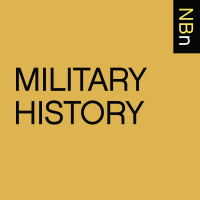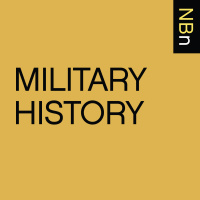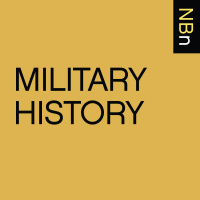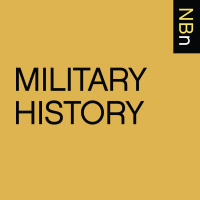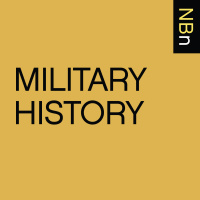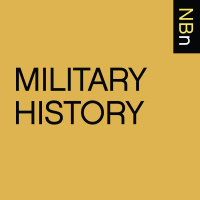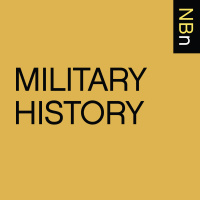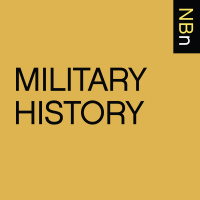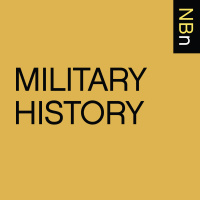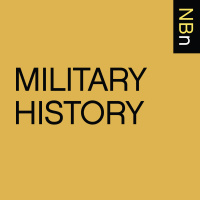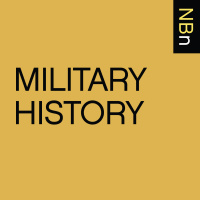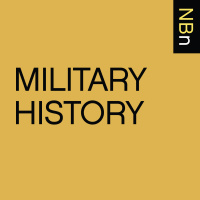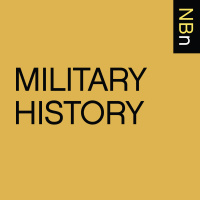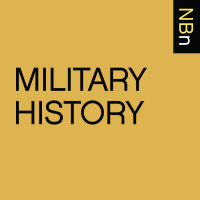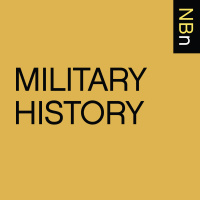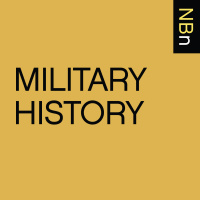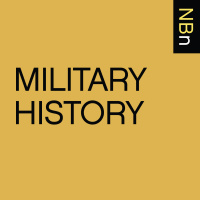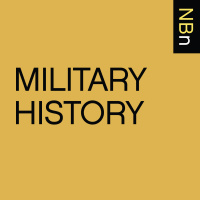Sinopsis
Interviews with Scholars of Military History about their New Books
Episodios
-
Christine Knauer, “Let Us Fight as Free Men: Black Soldiers and Civil Rights” (University of Pennsylvania Press, 2014)
20/05/2014 Duración: 01h03minRecent controversies over integrating the military have focused on issues of gender and sexuality. In the 1940s and 50s, however, the issue was racial integration. As Christine Knauer shows in her new book Let Us Fight as Free Men: Black Soldiers and Civil Rights (University of Pennsylvania Press, 2014), the persistence of soldiers and activists of color forced the Truman administration to bar discrimination in the military. Even then, however, it took continued agitation — and the military crisis of the early days of the Korean War — to force the army to allow black soldiers to fight alongside their white brothers-in-arms. Let Us Fight as Free Men illuminates how agitation for Civil Rights did not begin with the Brown decision in 1954 or the Montgomery Bus Boycott several years later, but was a long-term struggle with its roots in the Second World War.Learn more about your ad choices. Visit megaphone.fm/adchoices
-
Matthew Muehlbauer and David Ulbrich, “Ways of War” (Routledge, 2013)
07/05/2014 Duración: 01h08minIn their new survey for Routledge, military historians Matthew Muehlbauer and David Ulbrich move beyond a simplified critique of Russell F. Weigley’s critical “American Way of War” thesis to offer a reassessment of how the construct evolved from a number of original influences to take on various forms and applications as circumstances dictated. The end result is a view of American military affairs that is marked by an inherent flexibility that has on occasion been hamstrung by misperceptions on the part of the nation’s civilian and military leaders. Based on a wide range of secondary scholarship in American Military History, Ways of War: American Military History from the Colonial Era to the Twenty-First Century (Routledge, 2013) offers far more analytical and narrative detail than many other like-minded surveys, making it a worthy candidate for supplementing and succeeding Weigley’s original 1973 work.Learn more about your ad choices. Visit megaphone.fm/adchoices
-
Tobie Meyer-Fong, “What Remains: Coming to Terms with Civil War in Nineteenth-Century Century China” (Stanford UP, 2013)
01/04/2014 Duración: 01h14minTobie Meyer-Fong‘s beautifully written and masterfully argued new book explores the remains (in many senses and registers, both literal and figurative) of the Taiping civil war in nineteenth-century China. Often known as the “Taiping Rebellion” in English, the war is most often narrated as the story of a visionary (Hong Xiuchuan) or the movement he inspired. What Remains: Coming to Terms with Civil War in Nineteenth-Century China (Stanford University Press, 2013) transforms how we understand a civil war that deeply marked the physical and textual landscapes of modern China. In a series of chapters that move us through the texts and bodies (living, dead, and commemorated) of the war, Meyer-Fong simultaneously introduces readers to a world of fascinating source materials into which these bodies are inscribed. Thus a moving and incisive narrative also becomes a historiographical lesson on the significance of bringing a subtle and nuanced reading of gazetteers, martyrologies, newspapers, diaries
-
Robert Neer, “Napalm: An American Biography” (Harvard UP, 2013)
13/02/2014 Duración: 47minJust as there is no one way to write a biography, nor should there be, so there is no rule dictating that biography must be about the life of a person. In recent years, the jettisoning of this tradition has led to a number of compelling explorations of the lives of commodities (such as salt or the banana), texts (Gone with the Wind, for example), diseases (including cancer or cancer cells), and even the Atlantic Ocean. The latest entry into this realm of biographical inquiry is Robert Neer‘s Napalm: An American Biography (Harvard University Press, 2013). As the title suggests, this is a consciously American biography, meaning that Neer (a core lecturer at Columbia University) traces the arc of the life of the incendiary gel whilst also situating it in a national context. Napalm is, after all, an American invention and, as Neer writes in the prologue, “It’s history illuminates America’s story, from victory in World War II, through defeat in Vietnam, to its current position in a glob
-
Waitman Beorn, “Marching into Darkness: The Wehrmacht and the Holocaust in Belarus” (Harvard UP, 2013)
10/01/2014 Duración: 01h18minThe question of Wehrmacht complicity in the Holocaust is an old one. What might be called the “received view” until recently was that while a small number of German army units took part in anti-Jewish atrocities, the great bulk of the army neither knew about nor participated in the Nazi genocidal program. In other words, the identified cases were isolated exceptions. Who was at fault? Why, the SS of course. This view was spread by German generals in post-war memoirs, by the German government and courts, and by the German press and the public that read it. The “Good Wehrmacht” image was influential: many people–including scholars of the war–in countries that had fought Germany could be found rehearsing it. In his eye-opening book Marching into Darkness: The Wehrmacht and the Holocaust in Belarus (Harvard UP, 2013), Waitman Beorn challenges the “Good Wehrmacht” image. By focusing on a few units that participated in the invasion and occupation of Belarus in the lat
-
Ken MacLeish, “Fort Hood: Life and Uncertainty in a Military Community” (Princeton UP, 2013)
12/11/2013 Duración: 45minKen MacLeish offers an ethnographic look at daily lives and the true costs borne by soldiers, their families, and communities, in his new book Making War at Fort Hood: Life and Uncertainty in a Military Community (Princeton University Press, 2013). His intimate exploration of military lives makes salient the numerous and often contradictory ways that war enters into the everyday lives of soldiers and their families in Killeen, Texas. MacLeish begins by defining the site of research–Fort Hood is one of the largest military installations in the world, and many of the 55,000 personnel based there have served multiple tours in Iraq and Afghanistan. He then moves to an intense and palpable examination of the embodied experience of being a soldier, making a striking argument that “war persist in the lives, bodies and social worlds it has touched” (4). Thus, he connects the experiences of the body and the mind, exploring both physical and mental pain and the issues that surround the pursuit of heal
-
Aaron S. Moore, “Constructing East Asia: Technology, Ideology, and Empire in Japan’s Wartime Era, 1931-1945” (Stanford UP, 2013)
26/10/2013 Duración: 01h10minWe tend to understand the modernization of Japan as a story of its rise as a techno-superpower. In East Asia: Technology, Ideology, and Empire in Japan’s Wartime Era, 1931-1945 (Stanford University Press, 2013), Aaron Stephen Moore critiques this account in a study of the relationship between technology and power in the context of Japanese fascism and imperialism. Moore traces the emergence of a “technological imaginary” in wartime Japan, exploring how different groups (including intellectuals, technology bureaucrats, engineers, and state planners) invested the term “technology” with ideological meaning and power in the course of discussing and shaping national policy. Paying careful attention to the ways that technological and colonial development co-produced and challenged each other, Moore’s story respects the archives of both text and practice: the book deeply cuts into into the intellectual history of technology in the context of Japanese empire, while also following t
-
Eric Schmitt and Thom Shanker, “Counterstrike: The Untold Story of America’s Secret Campaign Against Al Qaeda” (Time Books, 2011)
25/10/2013 Duración: 42minThere are many books about the war against Al Qaeda. Most of these focus on counter-terrorism or counter insurgency military tactics or espionage operations. These books have become more frequent with the death of Osama Bin Laden. Counterstrike: The Untold Story of America’s Secret Campaign Against Al Qaeda (Times Books, 2011) is more than you can expect from its competitors. Eric Schmitt and Thom Shanker have been reporting on this issue for many years and cover the topic from a number of angles. Most importantly they are the first to give full recognition to the non-military methods used to counter Al Qaeda. They recognize that there is an intellectual chess game at play as well as the brute force of military intervention or drone strikes. Subtle and patient schemes are being used by US governments to undermine the social networks and social capital of the terrorist group. Ploys are used to coax key figures out of hiding. Counter propaganda campaigns are waged to break down support from potential sour
-
Robert Gerwarth, “Hitler’s Hangman: The Life of Heydrich” (Yale UP, 2012)
24/07/2013 Duración: 01h04minFew history books sell better than biographies of Nazi leaders. They attract anyone even tangentially interested in World War Two or Nazi Germany. It’s not surprising, then, that there are dozens of biographies of Himmler, Goering, and Hitler himself. Oddly, though, Reinhard Heydrich is relatively understudied. Robert Gerwarth’s wonderful new biography of Heydrich, titled Hitler’s Hangman: The Life of Heydrich (Yale UP, 2012), fills this gap admirably. Gerwarth’s book is part of a new wave of serious biographies that have appeared in the last years. All are characterized by a thoughtful engagement with recent research on the Holocaust. All devote considerable attention to their subjects’ lives in the period before the Nazi takeover. All emphasize the choices made by their subjects and the way these choices were not predetermined. Hitler’s Hangman is an outstanding example of this new scholarship. Gerwarth’s work, in particular, is distinguished by its particula
-
Brian Sandberg, “Warrior Pursuits: Noble Culture and Civil Conflict in Early Modern France” (Johns Hopkins UP, 2010)
15/07/2013 Duración: 57minBrian Sandberg‘s Warrior Pursuits: Noble Culture and Civil Conflict in Early Modern France (Johns Hopkins University Press, 2010) significantly revises our understanding of early modern military culture and absolutism. By examining the frequent civil wars of the early seventeenth century in France, Sandberg demonstrates that the French nobility were neither merely resisting the spread of the absolutist state nor sitting idly by while modern economic and military forces swept them into obscurity. Rather, by examining the many local and regional conflicts of the era, Sandberg shows that the French nobles of the era were capable actors in a complex arena dominated by a culture of honor, sophisticated systems of credit, and dangerous civil conflicts.Learn more about your ad choices. Visit megaphone.fm/adchoices
-
Dale Maharidge, “Bringing Mulligan Home: The Other Side of the Good War” (Public Affairs, 2013)
03/07/2013 Duración: 01h13minDale Maharidge‘s Bringing Mulligan Home: The Other Side of the Good War (PublicAffairs, 2013) is something of a departure from our regular offerings. Normally our authors are established academics specializing in the field of military history. Dale Maharidge, however, is an award-winning journalist who, prior to Bringing Mulligan Home, has had only limited exposure to the subject of the Pacific Theater in World War II. What he does bring however is a personal stake in the topic – his father Steve Maharidge served in the Sixth Marine Division, and took part in the assaults on Guam and Okinawa. As a child and then as a young man, Dale was both enthralled and frightened by his father’s regular accounts of the war – enthralled as a son learning more about his father’s experiences in combat; frightened by the storm of emotions and anger that often accompanied his stories. Inspired to learn more about his father’s service, Dale came to understand how Post-Traumatic Stress and Tra
-
David J. Silbey, “The Boxer Rebellion and the Great Game in China” (Hill and Wang, 2012)
03/06/2013 Duración: 01h16minHistorian David Silbey returns to New Books in Military History with his second book, The Boxer Rebellion and the Great Game in China (Hill and Wang, 2012). The popular uprising known as the Boxer Rebellion has long only been vaguely understood, with Hollywood playing as great a role in shaping common perception of the event as historians have. The result has been a generally misplaced understanding of the event, focusing more on the besieged Western consulates and t he relief expeditions than on the complex interactions between the Boxers and the Chinese Court, both between themselves and individually and together against the West. Silbey has written a very accessible account of the Boxer Rebellion that also conveys the complexity of these relationships and the often successful resistance Chinese forces raised against the advancing relief columns. As the West imposed its will over the Manchu court, the stage was set for the nation’s first halting steps into the modern era, setting in motion a long his
-
James Q. Whitman, “The Verdict of Battle: The Law of Victory and the Making of Modern War” (Harvard UP, 2012)
29/04/2013 Duración: 42minJames Whitman wants to revise our understanding of warfare during the eighteenth century, the period described by my late colleague and friend Russell Weigley as the “Age of Battles.” We commonly view warfare during this period as a remarkably restrained affair, dominated by aristocratic values, and while we recognize their horrors for the participants, we often compare battles to the duels those aristocrats fought over private matters of honor. Not true, claims Whitman, who argues instead that battles during the period 1709 (Battle of Malplaquet) and 1863/1870 (Gettysburg/Sedan) were understood by contemporaries not to be royal duels but “legal procedure[s], a lawful means of deciding international disputes through consensual collective violence.” [3] Understanding war as a form of trial is what gave warfare of the era its decisiveness (sorry Russ) and forces us, according to Whitman, to change the way we interpret, for example, Frederick the Great’s invasion of Silesia. Whitman
-
Stanley Payne, “The Spanish Civil War” (Cambridge UP, 2012)
13/03/2013 Duración: 57minThe Spanish Civil War is one of those events that I have always felt I should know more about. Thanks to Stanley Payne‘s concise, lucid new work on the subject, I feel less that way. I do not exaggerate when I say that Payne, a Professor Emeritus at the University of Wisconsin, is the nation’s foremost expert on Spanish history and on historical fascism in general. That expertise shines in this book and really comes to the fore in this interview. Published by Cambridge University Press as part of its Essential Histories series, Payne’s work synthesizes a lifetime of study in Spain, laying out the origins of the civil war in Spain’s deeply fractured political culture, and tracing the international and military developments that led to Francisco Franco’s eventual triumph in 1939. As Payne points out, the Spanish Civil War has been mythologized for political purposes since the day it began, much to the detriment of our understanding of the real story. The details of how and why the
-
Bernard Kelly, “Returning Home: Irish Ex-Servicemen and the Second World War” (Merrion, 2012)
21/02/2013 Duración: 57minThe Republic of Ireland (aka The Irish Free State, Eire) declared neutrality during the Second World War. That wasn’t particularly unusual: Portugal, Spain, Sweden, and Switzerland did too. Yet around 60,000 “neutral” Irish volunteered to fight on one side (with the Allies, in this case). That was unusual. After the war, most of the Irish volunteers remained in the UK. But 12,000 of them came back to Ireland. In Returning Home: Irish Ex-Servicemen and the Second World War (Merrion, 2012), Bernard Kelly tells their story. Like most things in Irish history, it’s complicated. On the one hand, the volunteers had served in the armed forces of Ireland’s archenemy (at least according to Republicans). On the other hand, they had fought the Nazis and thereby protected the Free World. Bernard explains how the Irish veterans were received and, interestingly, how they are still being discussed in Ireland today.Learn more about your ad choices. Visit megaphone.fm/adchoices
-
Sanders Marble, “Scraping the Barrel: The Military Use of Substandard Manpower, 1860-1960” (Fordham UP, 2012)
28/01/2013 Duración: 01h01minSanders Marble, senior historian of the United States Army’s Office of Medical History, presents a collection of essays related to the problems of substandard manpower as defined at different times in Western militaries over the modern era. Accordingly normally rigorous peacetime entrance standards have established conditions for the exclusion of certain individuals on the basis of physical, intellectual, ethnic, and racial criteria. During conflict, however, such notions of exclusion and exceptionalism are modified to reflect the needs of the army relative to the specific crisis. Marble’s Scraping the Barrel: The Military Use of Substandard Manpower, 1860-1960 (Fordham University Press, 2012) examines eleven case studies related to so-called “substandard manpower,” offering a series of assessments on military force structure in wartime. in this interview, our host talks with Sanders Marble about the overall project and his specific essay on American forces in the twentieth century, &
-
Frank Ellis, “The Damned and the Dead: The Eastern Front through the Eyes of Soviet and Russian Novelists” (University Press of Kansas, 2011)
05/12/2012 Duración: 53minFrank Ellis’ The Damned and the Dead: The Eastern Front through the Eyes of Soviet and Russian Novelists (University Press of Kansas, 2011) introduces to English-language readers the riches of Soviet war literature and argues that much of that literature constituted a meaningful form of resistance to the Soviet state. Refusing to write stories that corresponded to the mythology of the Soviet soldier-hero, authors such as Vasilii Grossman, Iurii Bondarev, or Vasil’ Bykov provided true insights into the Soviet war effort, including the bungling of the leadership, the deprivations suffered by the soldiers, and the stifling effect of ideological surveillance. This wide-ranging interview also touches upon some of Ellis’ other interests and should excite listeners to track down some of the few Soviet war novels available in English. I know that the work mentioned in Ellis’ title, The Damned and the Dead, by Viktor Astaf’ev is on my reading list.Learn more about your ad choices. Visit m
-
John C. McManus, “September Hope: The American Side of a Bridge Too Far” (NAL, 2012)
04/11/2012 Duración: 01h04minThis past September saw the sixty-eighth anniversary of one of the European Theater of Operations’ most familiar operations. Conceived by Field Marshal Bernard Law Montgomery, MARKET GARDEN was the Western Allies’ great gamble in the fall of 1944. With the Nazi war machine appearing to be on the ropes following its ignominious collapse in France, victory seemed for a brief moment to be just within grasp. The single problem, in Montgomery’s eyes, was logistics and the inability of the Anglo-American coalition to maintain the broad front strategy promoted by SHAEF commander, General Dwight D. Eisenhower. By offering a bold departure from his normal cautious outlook, Montgomery convinced Eisenhower to favor his Army Group with the supplies needed to carry out a bold stroke aimed at the lower Rhine crossings in Holland. Through an airborne coup de main, the Allies would seize three highway bridges at Nijmegen, Eindhoven, and Arnhem, opening up a pathway into the North German Plain, and in Montgo
-
Ben Shepherd, “Terror in the Balkans: German Armies and Partisan Warfare” (Harvard UP, 2012)
26/09/2012 Duración: 47minWith Terror in the Balkans: German Armies and Partisan Warfare (Harvard University Press, 2012), Ben Shepherd, a Reader at Glasgow Caledonian University, offers us insight into the complex and harrowing history of the German Army’s occupation of the former Yugoslavia from 1941-1943. By analyzing the command structures at the divisional and regimental level, Shepherd helps to explain how and why the violence ebbed and flowed in the various occupied regions. But he also looks further down, to see how the behavior of specific units was shaped by the vagaries of terrain, supply, the character of the opposition, and even certain commanders’ backgrounds and experiences. Always cautious not to make claims beyond the limits of his evidence, Shepherd nevertheless draws important conclusions about how history, personality, and National Socialist ideology shaped the behavior of the German Army in the Second World War. For that and for illuminating in clear and concise prose the foggy and chaotic political an
-
Gregory Crouch, “China’s Wings” (Bantam Books, 2012)
30/08/2012 Duración: 55minWhen I was a kid I loved the movie “The Flying Tigers.” You know, the one with John Wayne about the intrepid American volunteers sent to China to fight the Japanese before the United States really could fight the Japanese. I recall building a model of one of their P-40 Warhawks with their distinctive “shark’s mouth” nose art. And though I knew a lot about The Flying Tigers, I didn’t really know much about the Big Picture in which they operated. Thanks to Gregory Crouch‘s fine China’s Wings: War, Intrigue, Romance, and Adventure in the Middle Kingdom during the Golden Age of Flight (Bantam Books, 2012), I do. Greg does not tell the story of The Tigers; he tells the story of the aviation pioneers who made The Tigers possible. These were the man of the China National Aviation Corporation. They brought commercial aviation to China, which is an excellent tale in itself. But they also volunteered to fight the Japanese even before The Tigers entered the picture. Impo

